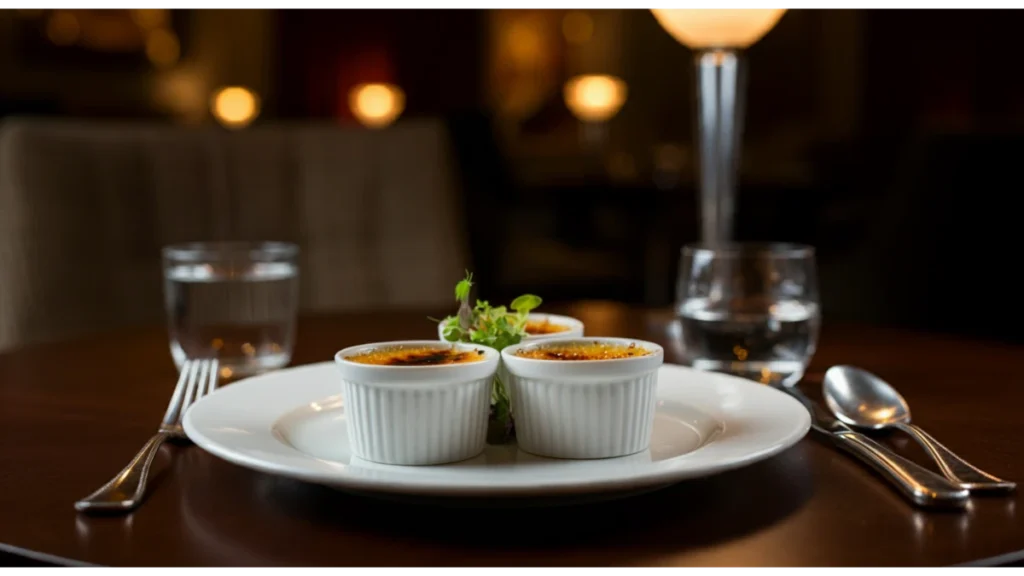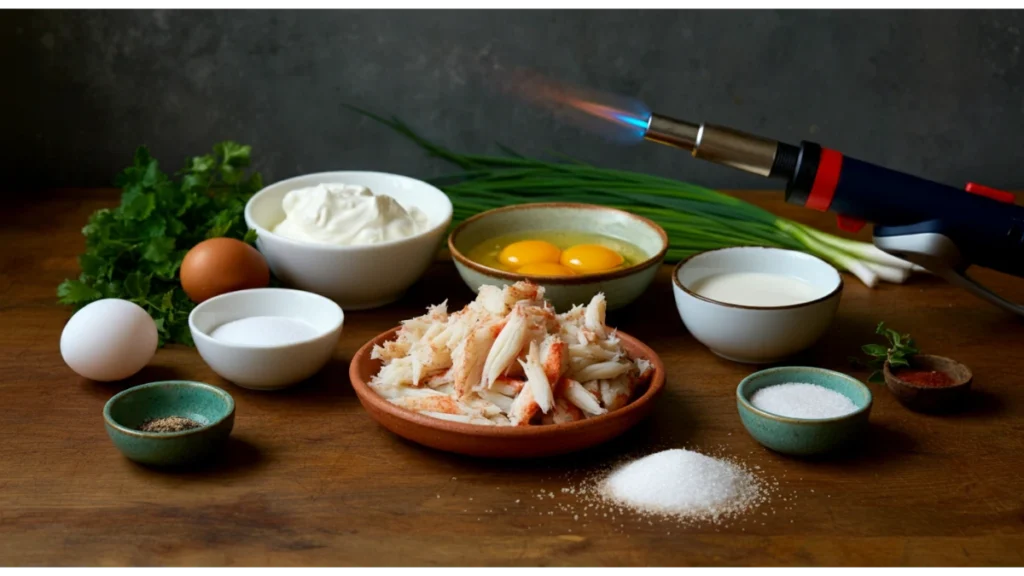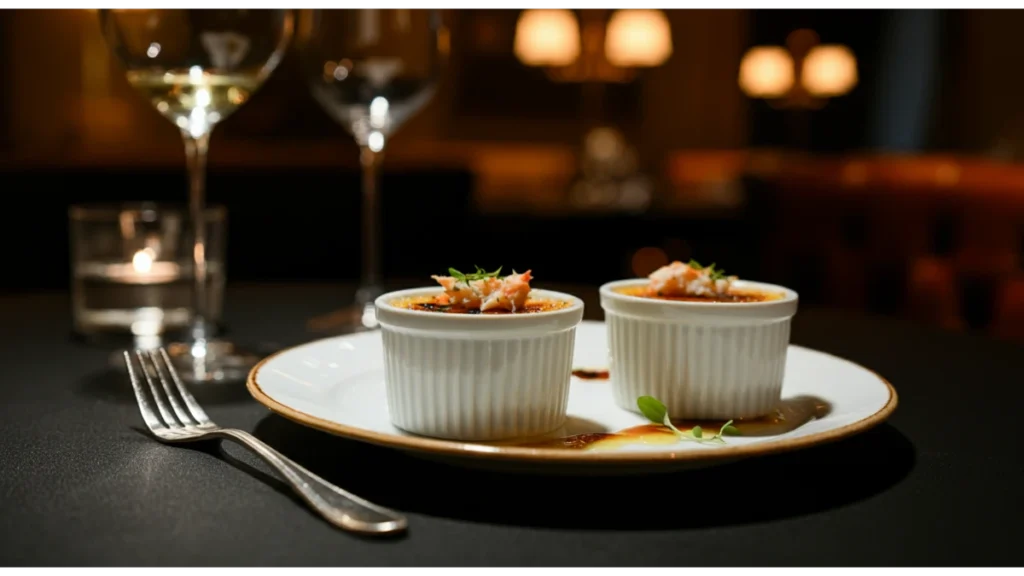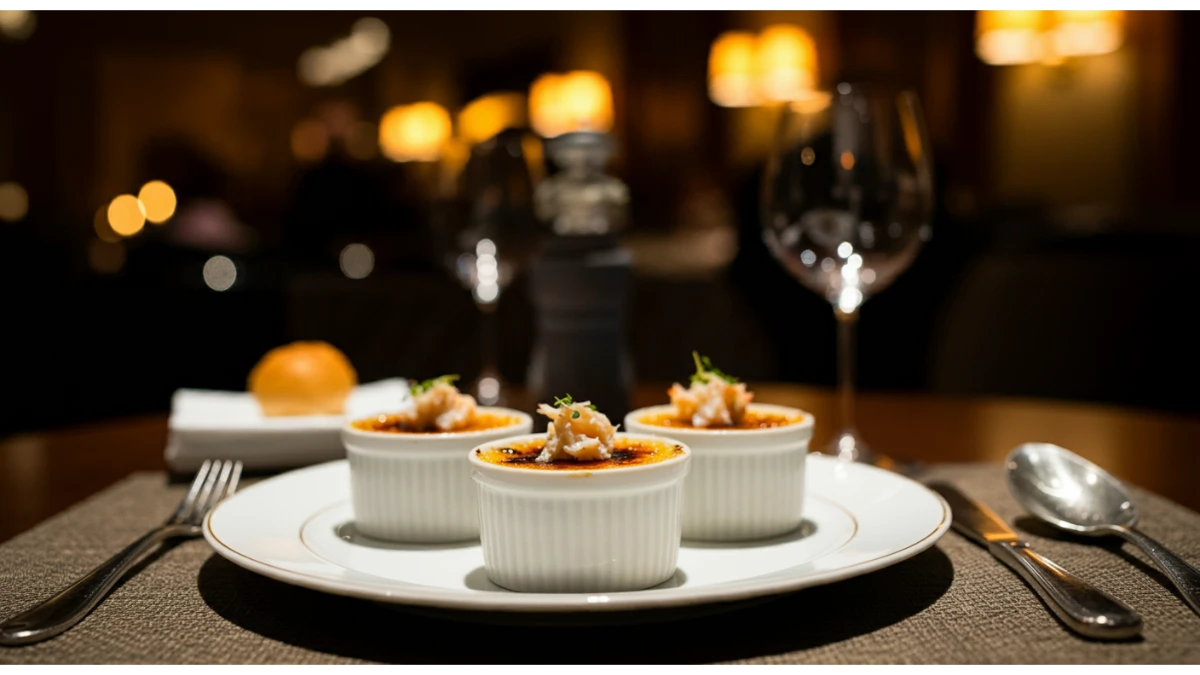Savory Sensation: The Best Crab Brulee Recipe You’ll Ever Make!
Welcome to the culinary world of gourmet delights! Today, I’m excited to share with you my favorite recipe: crab brulee. This exquisite dish combines the rich flavors of crab with the creamy texture of custard, topped with a perfectly caramelized sugar crust. Whether you’re hosting a dinner party or simply want to treat yourself, this crab brulee recipe will surely impress. Let’s dive into the world of flavors and textures that make this dish a standout.
Crab brulee is a unique twist on the classic dessert crème brûlée, transforming it into a savory masterpiece. Imagine the delightful contrast between the sweet, crispy top and the rich, savory crab custard underneath. This dish not only tantalizes the taste buds but also provides a visual feast that will leave your guests in awe.
In this article, we will explore the origins of crab brulee, discuss the key ingredients, and provide a detailed step-by-step guide to creating this culinary delight. We will also delve into the nutritional aspects, benefits, and tips for overcoming common challenges in preparation. So, let’s embark on this delicious journey together!
Key Aspects of Crab Brulee:

Crab brulee is not just a dish; it’s an experience. The combination of sweet and savory elements creates a delightful contrast that tantalizes the taste buds. The use of fresh crab meat elevates the dish, providing a taste of the sea that is both luxurious and comforting. According to culinary experts, the key to a successful crab brulee lies in balancing the flavors and achieving the perfect texture.
The Origin of Crab Brulee
Crab brulee, while not as widely known as its dessert counterpart, is believed to have originated from the desire to innovate traditional seafood dishes. The classic crème brûlée, with its smooth custard base and caramelized sugar topping, has been a staple in French cuisine since the 17th century. Chefs began experimenting with savory versions, incorporating various ingredients such as seafood, vegetables, and herbs. Crab brulee is a prime example of this culinary creativity, showcasing the sweet and delicate flavor of crab meat in a sophisticated format.
Flavor Profile
The flavor profile of crab brulee is a harmonious blend of sweetness from the caramelized sugar and the umami richness of crab. The heavy cream adds a luxurious mouthfeel, while the egg yolks contribute a deep, custardy richness. A hint of salt and freshly ground black pepper enhances the natural sweetness of the crab, making each bite a delightful experience.
Ingredients You’ll Need for Crab Brulee:

To create this masterpiece, you’ll need the following ingredients:
- Fresh Crab Meat (about 1 cup): The star of the dish, fresh crab meat provides a sweet, delicate flavor that is essential for this recipe. Choose lump crab meat for an indulgent texture.
- Heavy Cream (2 cups): This ingredient contributes to the rich, creamy custard base that makes crab brulee so indulgent. The fat content in heavy cream ensures a smooth texture.
- Egg Yolks (4 large): Egg yolks are crucial for achieving the custard’s creamy consistency. They also add richness and depth of flavor.
- Granulated Sugar (1/4 cup plus extra for topping): Sugar is used in two ways: to sweeten the custard and to create the caramelized topping. The right amount of sugar is key to balancing the flavors.
- Salt (a pinch): A small amount of salt enhances the overall flavor of the dish and balances the sweetness.
- Freshly Ground Black Pepper (to taste): Black pepper adds a subtle heat and complexity to the dish, elevating the flavor profile.
- Optional: A splash of sherry or white wine for added depth can be included in the custard mixture for those who enjoy a more complex flavor.
Step-by-Step Instructions to Make Crab Brulee:
Creating crab brulee is a rewarding process that allows you to showcase your culinary skills. Follow these detailed steps to achieve the perfect crab brulee:
- Preheat Your Oven:
Set your oven to 325°F (160°C). Preheating is essential to ensure even cooking. - Prepare the Custard:
In a medium saucepan, warm the heavy cream over medium heat until it starts to bubble gently. Remove from heat and let it cool slightly. This step is crucial as overheating can cause the cream to scorch. - Mix the Egg Yolks:
In a mixing bowl, whisk together the egg yolks, sugar, salt, and pepper until well combined. The mixture should be pale and slightly thickened. - Combine the Mixtures:
Slowly incorporate the warm cream into the egg yolk mixture, whisking constantly to avoid curdling. This process, known as tempering, helps to slowly raise the temperature of the egg yolks without cooking them. If you accidentally curdle the mixture, you can strain it through a fine-mesh sieve to remove any clumps before baking. - Fold in the Crab:
Carefully mix in the fresh crab meat, making sure it is evenly distributed throughout the custard mixture. Be careful not to break up the crab meat too much; you want to retain some texture. - Prepare the Ramekins:
Lightly grease individual ramekins with butter. This will help the custard release easily after baking. Pour the crab mixture into the ramekins, filling them about three-quarters full. - Bake in a Water Bath:
Set the ramekins in a baking dish and fill the dish with hot water until it reaches halfway up the sides of the ramekins. This technique, known as a bain-marie, helps to regulate the temperature and prevents the custard from cooking too quickly. Bake for approximately 30-35 minutes, or until the custards are firm but still slightly wobbly in the center. - Cool and Refrigerate:
Take the ramekins out of the water bath and allow them to cool at room temperature. After cooling, refrigerate for at least 2 hours or overnight to let the flavors develop and the custard set. Chilling allows the flavors to meld and the custard to firm up. - Caramelize the Top:
With a kitchen torch, carefully caramelize the sugar until it develops a golden, crispy crust. If you don’t have a torch, you can place the ramekins under a broiler for a couple of minutes, watching closely to prevent burning. - Serve and Enjoy:
Allow the brulee to sit for a minute before serving. This brief resting period helps the caramelized sugar top to harden slightly. Enjoy your crab brulee with a crisp salad or as a luxurious appetizer.
Nutritional Value:
Here’s a breakdown of the nutritional benefits of the key ingredients in crab brulee:
| Ingredient | Benefits |
|---|---|
| Fresh Crab Meat | High in protein, low in fat, rich in omega-3 fatty acids, supports heart health, and promotes muscle growth. |
| Heavy Cream | Source of calcium, adds creaminess and richness, contains vitamins A and D. |
| Egg Yolks | Packed with vitamins A, D, E, and B12, supports brain health, rich in choline, which is vital for liver function. |
| Sugar | Provides energy, but should be consumed in moderation; offers a quick source of fuel for the body. |
| Black Pepper | Contains antioxidants, enhances digestion, may help improve metabolism. |
Benefits of Crab Brulee:

Crab brulee is not just delicious; it offers several health benefits. The fresh crab meat is an excellent source of lean protein and essential fatty acids, which are crucial for heart health. The dish is also a great way to impress guests with your culinary skills while providing them with a unique dining experience. Imagine the delight on their faces as they crack through the caramelized sugar crust to reveal the creamy crab custard beneath!
Culinary Versatility
One of the remarkable aspects of crab brulee is its versatility. It can be served as an elegant appetizer at a formal dinner or as a luxurious main course when paired with a light salad or grilled vegetables. The dish can also be adapted to suit various dietary preferences, making it a fantastic option for gatherings where guests may have different tastes.
Overcoming Challenges:
Creating a perfect crab brulee might seem daunting, but with a few tips, you can overcome common challenges:
Preventing Curdling
Always temper the egg yolks by gradually adding warm cream to them. This helps to avoid scrambling the eggs. If you accidentally curdle the mixture, you can strain it through a fine-mesh sieve to remove any clumps before baking.
Achieving the Right Texture
Ensure the custard is not overcooked. It should be set but still slightly jiggly in the center when you take it out of the oven. If you’re unsure, it’s better to underbake slightly, as the residual heat will continue to cook the custard as it cools.
Caramelizing the Sugar
If using a broiler, keep a close eye on the sugar to prevent burning. A kitchen torch gives you more control over the caramelization process, allowing you to achieve that perfect golden crust.
Future Trends in Culinary Arts:
As culinary trends evolve, crab brulee is gaining popularity in fine dining and gourmet home cooking. Chefs are experimenting with different flavor profiles, incorporating ingredients like truffle oil or smoked paprika to enhance the dish further. Additionally, the rise of sustainable seafood practices is encouraging more home cooks to use fresh, local crab in their recipes, making crab brulee not only a delicious choice but also an environmentally conscious one.
The Rise of Plant-Based Alternatives
With the growing interest in plant-based diets, many chefs are exploring ways to create vegan versions of traditional dishes. For crab brulee, this could mean using plant-based crab substitutes made from ingredients like jackfruit or tofu, combined with a creamy non-dairy custard base. This trend not only caters to vegan diners but also introduces new flavors and textures to the dish.
Tips and Tricks Section:
- Ingredient Quality: Use the freshest crab meat you can find for the best flavor. If possible, purchase it from a reputable seafood market. Fresh crab meat will have a sweet, delicate flavor that frozen alternatives may lack.
- Flavor Enhancements: Experiment with adding herbs like dill or tarragon to the custard mixture for an aromatic twist. These herbs complement the sweetness of the crab and add depth to the overall flavor profile.
- Serving Suggestions: Pair crab brulee with a crisp white wine or a light salad to balance the richness of the dish. A Sauvignon Blanc or a dry Riesling would pair beautifully with the flavors of the crab.
- Presentation Matters: Consider garnishing the dish with microgreens or edible flowers for an elegant touch. This not only enhances the visual appeal but also adds a fresh flavor element.
Variations and Adaptations:
If you’re looking to adapt the crab brulee recipe for different dietary preferences, here are a few ideas:
- Gluten-Free: This recipe is inherently gluten-free, making it a suitable option for individuals with gluten sensitivities.
- Vegetarian Option: Substitute crab meat with sautéed mushrooms or a blend of vegetables for a vegetarian brulee. This variation can be made by using a similar custard base and adding sautéed leeks, mushrooms, and spinach.
- Dairy-Free: Use coconut cream instead of heavy cream for a dairy-free version that still maintains a rich texture. The natural sweetness of coconut cream pairs well with the crab flavor.
FAQs Section:
Q: Can I make crab brulee ahead of time?
A: Yes, you can prepare the custards in advance and store them in the refrigerator. Just caramelize the sugar right before serving to ensure the topping stays crispy.
Q: What can I substitute for crab meat?
A: You can use lobster or shrimp as an alternative for a different seafood flavor. Both options will provide a similar texture and richness to the dish.
Q: How should I store leftovers?
A: Store any leftovers in an airtight container in the refrigerator for up to 2 days. Reheat gently before serving, but avoid reheating the caramelized top to maintain its texture.
Q: What are some good side dishes to serve with crab brulee?
A: Light salads, roasted vegetables, or a simple citrus vinaigrette complement the richness of the brulee beautifully. Additionally, a glass of sparkling wine can elevate the dining experience.
Conclusion:
Crab brulee is a sophisticated dish that brings a touch of elegance to any dining experience. With its creamy texture and delightful flavors, it’s sure to become a favorite in your culinary repertoire. Whether you’re impressing guests or indulging in a special treat for yourself, this recipe is a must-try.
Don’t forget to share your experiences and variations in the comments below! I would love to hear how you made this dish your own or any tips you discovered along the way. Happy cooking!

